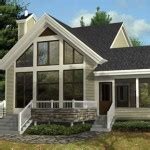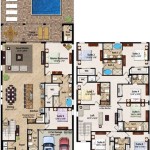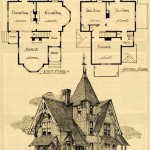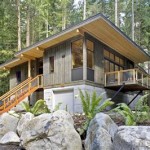Carriage House Building Plans: Design Your Dream Today - 2024 Schedule
The allure of a carriage house extends beyond its historical roots as a storage space for horse-drawn carriages. In contemporary times, it represents an opportunity to expand living space, create a functional workspace, or establish a charming guest suite. Planning a carriage house build requires careful consideration, meticulous design, and a realistic timeline to ensure the project aligns with both aesthetic aspirations and practical needs. This article provides a comprehensive overview of key aspects involved in designing and planning a carriage house, with particular focus on navigating the considerations for a build scheduled in 2024.
The initial stage of any carriage house project involves a thorough assessment of the property and its existing infrastructure. This includes evaluating the available space, considering zoning regulations, and determining the feasibility of connecting utilities such as water, electricity, and sewage. Ignoring these preliminary steps can lead to costly delays and unforeseen complications later in the construction process. Local building codes vary significantly, and adherence to these codes is paramount to avoid legal issues and ensure the safety and structural integrity of the building. It is strongly recommended to consult with local planning authorities and obtain all necessary permits before commencing any physical construction work.
Budgeting is another crucial aspect of planning a carriage house. Estimating the cost of materials, labor, permits, and potential overruns is essential for maintaining financial control throughout the project. Obtaining multiple quotes from contractors and suppliers allows for a comparative analysis and helps identify the most cost-effective options without compromising quality. Contingency funds should be allocated to address unexpected expenses or modifications that may arise during construction. Securing financing, if required, should also be addressed early in the planning phase.
With the preliminary considerations addressed, attention can be directed towards the design and layout of the carriage house. This stage involves defining the intended purpose of the structure, creating a detailed floor plan, and selecting appropriate architectural styles and materials. The design should complement the existing architecture of the main house while reflecting the personal preferences and functional requirements of the owner. Collaborating with an architect or designer can provide valuable insights and ensure the final design meets both aesthetic and structural standards. The 2024 build schedule should incorporate adequate time for the design phase, allowing for revisions and adjustments as needed.
Understanding Zoning Regulations & Permits
Navigating the intricacies of zoning regulations and obtaining the necessary building permits is a critical, and often underestimated, part of the carriage house project. Zoning regulations dictate what types of structures are permitted on a particular property, including their size, height, and setback requirements from property lines. These regulations are designed to maintain neighborhood character, ensure public safety, and manage land use effectively. Failure to comply with zoning regulations can result in fines, construction delays, or even the forced removal of the structure. Therefore, thorough research and consultation with local planning authorities are essential before finalizing any design plans.
The permit application process typically involves submitting detailed architectural plans, engineering drawings, and other supporting documents to the local building department. The building department reviews these documents to ensure compliance with building codes, safety standards, and zoning regulations. The review process can take several weeks or even months, depending on the complexity of the project and the workload of the department. It is important to factor this time into the 2024 build schedule to avoid unnecessary delays. Furthermore, be prepared to address any comments or revisions requested by the building department and to provide any additional information that may be required.
In addition to building permits, other permits may be required depending on the specific aspects of the project. These may include permits for electrical work, plumbing, HVAC systems, and driveway modifications. It is advisable to consult with the building department or a qualified contractor to determine all the necessary permits and to ensure compliance with all applicable regulations. Ignoring any required permit can lead to fines, delays, and potential legal issues.
Designing for Functionality & Aesthetics
The design of a carriage house should seamlessly blend functionality and aesthetics, reflecting the intended purpose of the structure while complementing the architectural style of the main house. The floor plan should optimize the use of space and provide a comfortable and efficient layout for the intended activities. For example, if the carriage house is intended as a guest suite, it should include a bedroom, bathroom, and living area. If it is intended as a workspace, it should provide ample desk space, storage, and natural light.
The architectural style of the carriage house should harmonize with the existing architecture of the main house. Using similar materials, colors, and architectural details can create a cohesive and visually appealing design. However, it is also possible to introduce subtle variations to create a unique and distinctive look. The choice of exterior materials, such as siding, roofing, and windows, should be durable, low-maintenance, and aesthetically pleasing. Consider incorporating sustainable materials and energy-efficient design features to reduce the environmental impact of the building and minimize long-term operating costs.
Interior design elements, such as lighting, flooring, and paint colors, should contribute to the overall ambiance of the carriage house and enhance its functionality. Natural light is highly desirable, so consider incorporating large windows, skylights, or French doors. The placement of windows and doors should be carefully planned to maximize natural light and ventilation while ensuring privacy and security. The choice of flooring should be durable, easy to clean, and appropriate for the intended use of the space. Neutral paint colors can create a versatile and inviting atmosphere.
Creating a Realistic 2024 Build Schedule
Developing a realistic build schedule is crucial for managing the project effectively and minimizing delays. The schedule should outline each phase of the construction process, from site preparation to final finishing, and assign estimated timeframes for each task. Factors that can affect the schedule include weather conditions, material availability, contractor availability, and permit approval timelines. It is important to build in contingency time to accommodate unexpected delays or unforeseen circumstances. A 2024 schedule needs to account for potential material delays related to ongoing supply chain issues.
The first step in creating a build schedule is to define the project scope and identify all the tasks involved. This includes site preparation, foundation work, framing, roofing, siding, window and door installation, electrical work, plumbing, HVAC installation, insulation, drywall, painting, flooring, and finishing touches. Each task should be broken down into smaller, more manageable subtasks. For example, framing could be broken down into wall framing, roof framing, and floor framing. This level of detail helps to ensure that all aspects of the project are accounted for and that the schedule is as accurate as possible.
Once the tasks have been defined, the next step is to estimate the time required to complete each task. This can be done by consulting with contractors, tradespeople, and suppliers. Obtain quotes from multiple contractors and compare their estimated timeframes. Consider factors such as the complexity of the task, the skill level of the workers, and the availability of materials. Add a buffer of contingency time to each task to account for potential delays. For example, if a task is estimated to take one week, add an extra day or two to account for potential weather delays or material shortages.
The build schedule should be flexible and adaptable to changes. Regularly monitor progress and make adjustments to the schedule as needed. Communicate with contractors and suppliers to stay informed about potential delays or issues. Use project management software or a spreadsheet to track progress and manage the schedule effectively. Consistent oversight and proactive communication are essential for keeping the project on track and ensuring that it is completed within the desired timeframe. A well-defined and actively managed 2024 schedule will significantly increase the likelihood of a successful carriage house build.

Carriage House Plans Pacific Homes

Tiny Cottage House Plans Guide To Build Yours Craft

Carriage House Plans Pacific Homes

Carriage House Plans Pacific Homes

Elm Carriage House Mosscreek Modern And Rustic Home Designs

10 Plans For In Laws Apartment Adu Over Garage Craft

Carriage House Plans Pacific Homes

Elm Carriage House Mosscreek Modern And Rustic Home Designs

Modern Farmhouse Plan With Angled Garage

Carriage House Plans Pacific Homes
Related Posts








